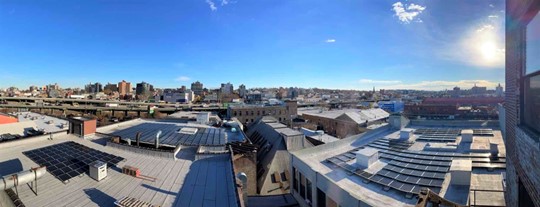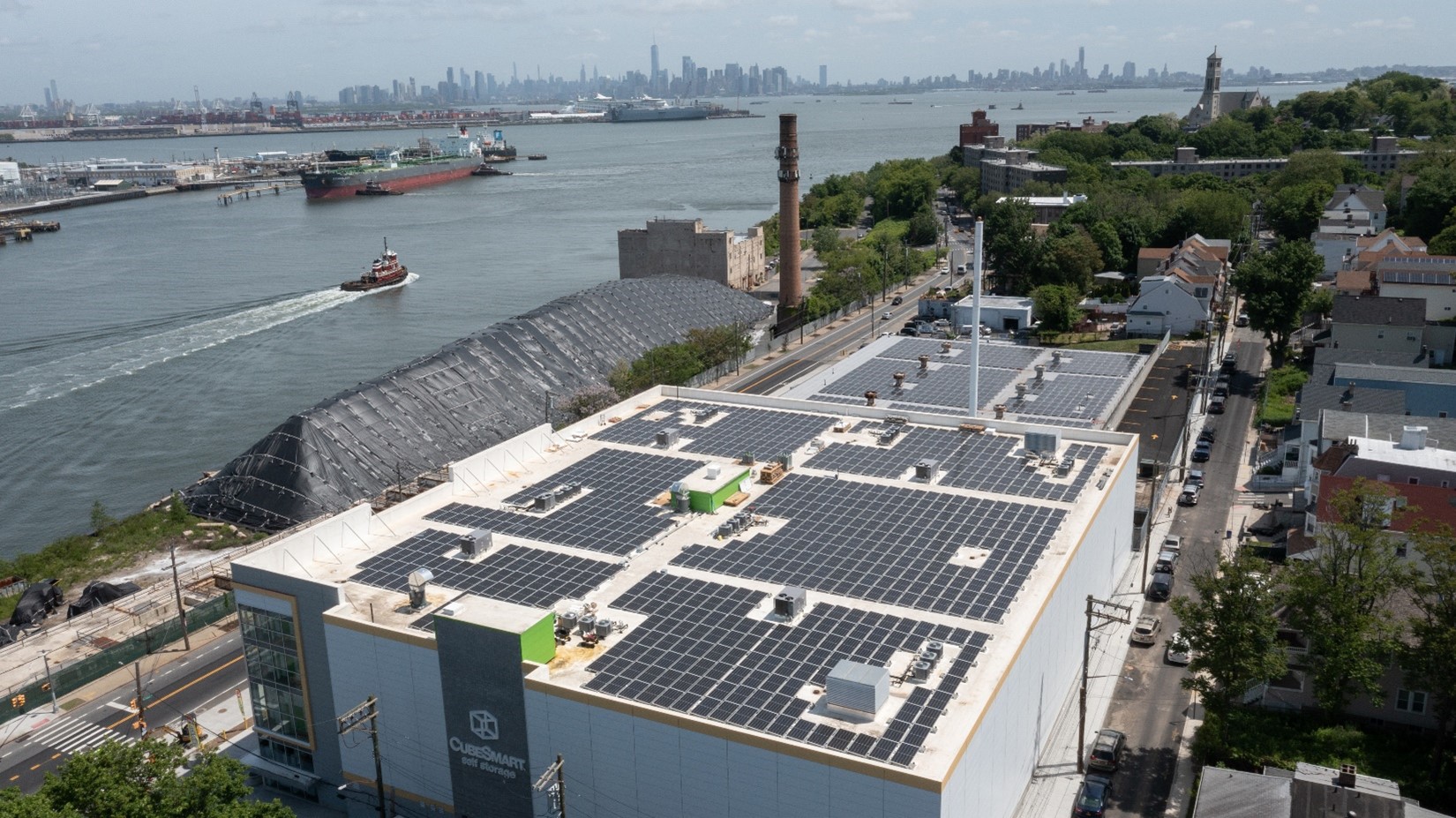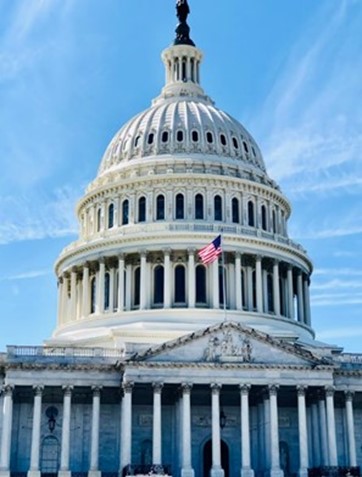U.S. Senate Passes Inflation Reduction Act
U.S. Solar Sector About to Hit a Whole New Level of Growth
On Sunday, August 7, 2020, the U.S. Senate passed the Inflation Reduction Act of 2022 (IRA), a bill that provides $369 billion of support to address climate change and energy security. Introduced by U.S. Senators Schumer and Manchin in mid-July, the Bill is the reincarnation of the Build Back Better Act, which Senator Manchin killed because he believed it was bad for the U.S. economy. At the time, Senator Manchin said that he would not support any modified bill, so the IRA announcement was a surprise for Washington and the renewable energy industry. So, what changed?
The revised Bill helped to resolve Senator Manchin’s concerns about U.S. inflation, especially energy inflation. He supported “… a plan that will advance a realistic energy and climate policy that lowers prices today and strategically invests in the long game.” As well, Senator Manchin was concerned about America’s dependence upon foreign energy, stating he “… will not vote to support policies that make the United States more dependent on foreign energy and supply chains or risk moving the country closer to the unstable and vulnerable European model of energy we are witnessing today.”
With the Senate passing the Bill, the House is expected to pass it this week before it is signed into law by President Biden, likely by the end of the week.

Hot Incentives for the Solar Industry
The 755 page Inflation Reduction Act of 2022 amended the Internal Revenue Code of 1986 in favour of the renewables industry and includes over $135 billion of clean energy tax credits. Major amendments were made to the Investment Tax Credit (ITC), which provides a tax benefit based upon the value of a project. Though the formula is somewhat complex, the IRA provides a ten year extension of the ITC at 30%, with more incentives that could allow projects to claim up to 50%. The IRA specifically allows:
- a 10-year extension of the ITC at 30%. The credit was set to decline from 26% in 2022 to 22% in 2023 to 10% thereafter;
- interconnection upgrade eligibility. Solar companies pay utilities to upgrade their power grids to connect solar projects. The IRA will allow solar companies to claim ITC against interconnection upgrades;
- up to 30% ITC for standalone storage. Currently, the law allows this credit when storage is part of an electrical generating facility;
- the ability to sell ITCs to third parties. Previously, the law required the ITC to be utilized by the actual investors in the project, which lead to more cumbersome (and costly) “partnership flip” structures;
- a 10% increase if steel, iron, or other key components are manufactured in the U.S.;
- a 10% increase for projects located in communities that depend upon fossil fuels for power;
- a 20% increase for projects located in low-income communities or Native American lands;
- a limited directed pay provision where the government will refund ITC in cash for tax-exempt entities and municipal utilities.
The IRA also provides production tax credit (PTC) incentives, which apply to energy produced by a renewable facility. The PTC is an alternate credit (one cannot leverage both the ITC and PTC for the same project), provided on a per kWh basis. It had expired at the end of 2021 but now the IRA allows:
- restoring the PTC for projects that begin construction before January 1, 2025 and in service;
- an election to claim 100% of the PTC as a federal tax payment;
- allow enterprises and individuals that produce and sell solar energy to claim PTC over the next 10 years;
- a 0.3¢/Wh base PTC and a 1.2¢/Wh credit if projects meet wage and apprenticeship criteria;
- potentially increasing the PTC 500% if:
- a facility’s maximum net output is under 1 megawatt (MW);
- a wage and apprenticeship requirements are met for a facility.
For projects started before 2025 but not operational, the ITC and PTC are replaced with technology agnostic zero-carbon emissions and investment credits. Rather than be energy specific (i.e., for wind and solar), other technologies (wave and geothermal, for example) would qualify for these credits. These credits would decline for projects started in 2034 or later, or when annual emissions decline 75% in the power generation industry.
Other IRA goodies that could benefit the U.S. solar industry include:
- $150 million for the Interior Department to hire staff to work on permitting issues;
- $125 million for the Department of Energy (DoE) to hire staff to work on permitting issues;
- $100 million for the Federal Energy Regulatory Commission to hire staff to work on permitting issues;
- $3.6 billion plus $40 billion of DoE loan guaranties to expand the DoE’s clean energy loan authority;
- $1 billion for rural renewable energy loans;
- $2 billion of direct loan authority for transmission facilities;
- $760 million of grants to site interstate transmission lines;
- $9.7 billion for the U.S. Department of Agriculture (USDA) to loan to rural electric cooperatives.
Made in the U.S.A. Incentives
In our opinion, one of the most important IRA incentives are $30 billion of tax credits for domestic solar cell manufacturing. The U.S. solar industry has a long history of taxing imports of solar components without actually growing a domestic supply chain. This includes “anti-dumping” tariffs placed on solar panels imported from China in 2012 and 2014, and most other countries in 2018. Despite these tariffs, the U.S. solar manufacturing industry has remained miniscule, with the exception of First Solar, a manufacturer of panels used in utility scale projects. However, the $30 billion of tax credits for domestic manufacturers, which provide sizable and specific incentives to manufacture solar panels and other components in the U.S., could reduce panel and component costs as well as strengthen U.S. solar supply chains for the industry.

How to Capitalize on the Inflation Reduction Act of 2022
Sophic Capital client UGE International (“UGE” or the “Company”) [TSXV:UGE; OTC:UGEIF] is a developer and operator of U.S. community solar projects. With the IRA about to become law, UGE is set to benefit from the ITC in particular, as well as incentives related to interconnection upgrade costs, disadvantaged communities, and storage. Although the Company does not manufacture solar components, it could benefit from U.S. manufacturing incentives that lead to lower costs, quicker deliveries, and a more robust supply chain.
UGE International Develops Community Solar Facilities
Until recently, many Americans could not enjoy the cost and societal benefits of solar energy. This is because they are either: a) homeowners who cannot afford the installation and maintenance costs of solar projects, or b) are tenants and cannot or will not invest in properties that they do not own. Fortunately, community solar projects allow these consumers to subscribe to solar energy and reap the benefits. According to the White House, the 4.5 million families living in government assisted living housing could save at least 10% on their annual electric bills by subscribing to community solar.
To further incentivize community solar, the Department of Energy announced a platform to accelerate community solar for government housed families in Colorado, Illinois, New Mexico, New York, New Jersey, and Washington, D.C. The DoE has set a goal to power 5 million homes with community solar by the end of 2025, which represents approximately 8X growth over year-end 2021. The White House estimates that families in the pilot states alone will see over $1 billion in savings annually.
UGE International is targeting the U.S. community solar sector. The Company develops, finances, builds, owns and operates solar projects for the 80% of U.S. households and 90% of businesses that cannot install solar projects themselves. UGE allows the subgroup of people who want to participate in renewable energy to subscribe to its community solar programs and receive credits that offset their utility bills. UGE has over 12 years of history in this mid-scale solar market and has grown its backlog to 195MW, about 14-times where it stood at the beginning of 2020.
UGE ‘s community solar facilities are not only for renters and small business owners. UGE also includes T-Mobile and Bloomberg as customers that want to offset their energy consumption with solar power.

Source: UGE International
What the IRA Could Mean for UGE International
Let’s use some back of the envelope math to determine how IRA provisions could benefit UGE’s projects. To keep things simple, let’s assume a $2,620,000/MW valuation for projects under development, as per the third-party appraisal on UGE’s Norway, Maine project.
With these assumptions (and recall UGE has over 195MW of project backlog and has a goal to have 100MW operational by 2024):
- an ITC increase from 26% to 30% adds 4% x $2,620,000 = $104,800 per MW
- an ITC increase from 22% to 30% adds 8% x $2,620,000 = $209,600 per MW
- an ITC increase from 10% to 30% adds 20% x $2,620,000 = $524,000 per MW
These benefits accrue without UGE lifting a finger. Furthermore:
- interconnection upgrades applied to the full fair market value. For example, assuming $250,000/MW, the ITC would have applied to $2,620,000 – $250,000 = $2,370,000/MW. Now it will apply to the full $2,620,000 /MW.
Unknown potential benefits at this time:
- what percentage of UGE’s projects would qualify for the 10% ITC increase for projects located in communities that depend upon fossil fuels for power;
- how much UGE can extract from the 10% ITC increase if steel, iron, or other key components are manufactured in the U.S.A;
- timing surrounding when/if and how much UGE monetizes the ITC because partnership flips are no longer required

Source: UGE International
Robust Project Backlog, Pipeline, and Cash
As of June 30, 2022, UGE International had 195MW of project backlog versus 144MW on March 31, 2022. The Company had 381MW of projects in development and a 900+MW pre-development pipeline. To support this growth, UGE International secured $25 million of project financing (for six projects in Maine) and $2.225 million of green bonds for further project development. Management, who owns 34% of shares along with insiders, have been diligent with the Company’s cap table – the Company has 32.2 million basic shares and 37.4 million fully diluted.
Given all this this, we believe that UGE International is an excellent way for investors seeking exposure to the benefits of both the Inflation Reduction Act of 2022 and U.S. community solar.
For More Research
Please click HERE, for more research about UGE International and the solar industry.
Sign up for Sophic Capital’s reports at https://sophiccapital.com/subscribe/

